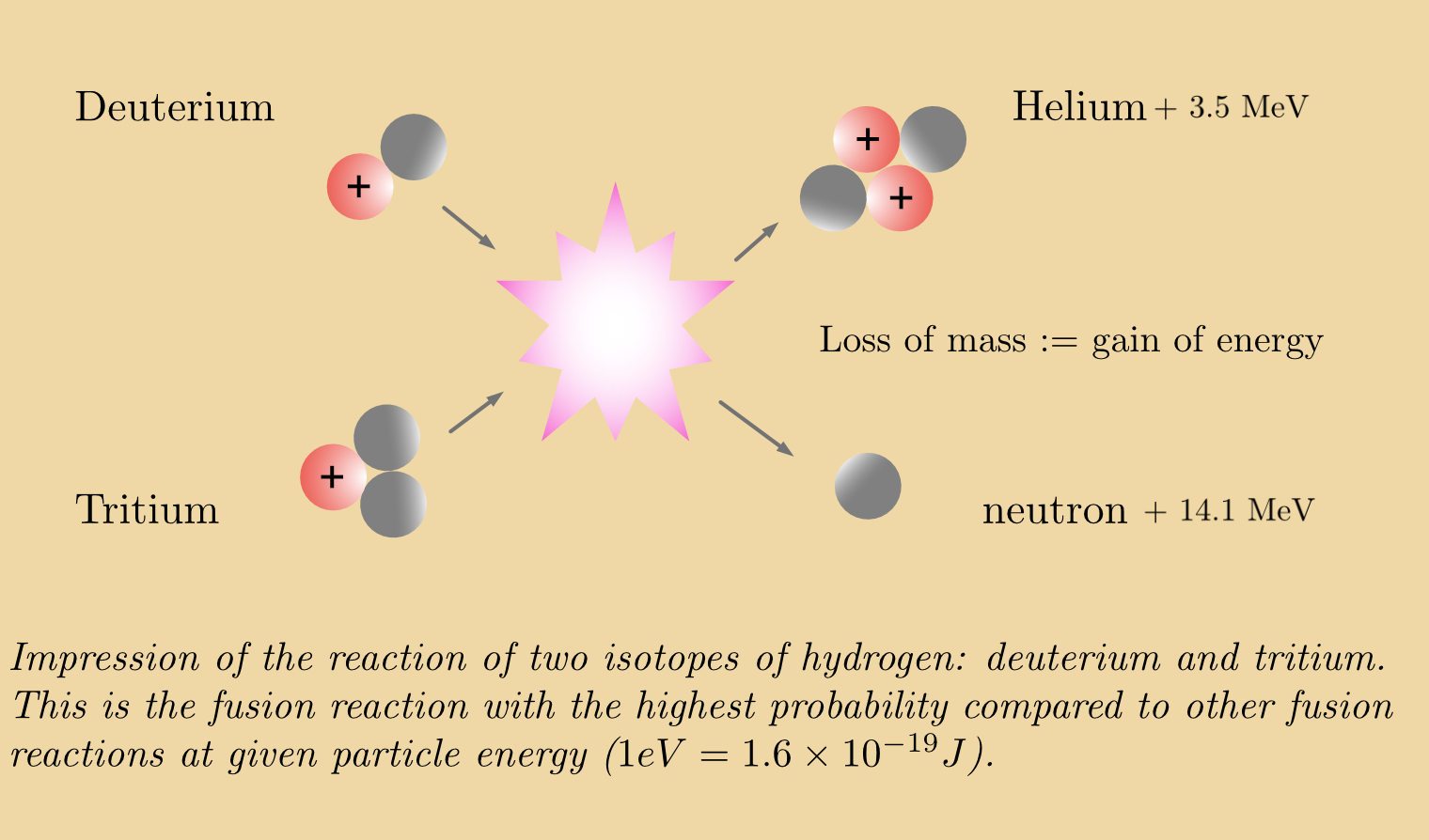
When light atoms fuse together energy is released. This is the process that powers the sun: nuclear fusion. It is the opposite process of nuclear fission, in which energy is released when heavy atoms are split. In controlled nuclear fusion, the newly formed elements are not radioactive and there is no risk of a meltdown. A reactor would only produce a modest amount of relatively short-lived nuclear waste: wall material of the reactor during its lifetime and the reactor itself after its lifetime.

Man-made controlled nuclear fusion on earth is routinely demonstrated but the big challenge is to build a reactor with net energy gain and a self-sustained reaction. The route believed the most viable, going by national and international fusion programmes, uses magnetic confinement. A gas is heated until it fully ionises: the positively charged nuclei and negatively charged electrons are fully separated, this state is called a plasma. Clearly, the hot plasma will try expand, but in a magnetic confinement device it is prevented from doing so by a tailored magnetic field. It is further heated to such extreme temperatures that the nuclei gain sufficient energy to overcome the repelling Coulomb forces such that they can fuse.
The dynamics of a magnitised plasma give rise to emission as well as absorption of electro-magnetic waves in the microwave spectrum. The wavelength in the spectrum is typically millimetres to tens of centimetres, which is also the size of many phenomena in the plasma (clearly in part a causal effect). This makes the phase of the microwaves of interest and phase relations are what microwave engineering is all about. Microwaves are used actively, for instance for heating purposes or as probing beam, as well as passively by analysing emission from the plasma. These pages are meant as an applied and above all ENJOYABLE introduction to microwave engineering, while at the same time slipping in some words on fusion.